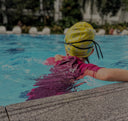Welcome to Dreamer Swim Club
What's the Best First Sport for a Child? A Parent's Guide

As a parent in Singapore, you're surrounded by an almost overwhelming number of options for your child's first sport: soccer, gymnastics, tennis, dance, the list goes on. With the pressure to choose the "right" one, how do you decide? What if the most important question isn't, "What is the best sport?" but rather, "What makes a first sport great?"
As a team of multi-sport athletes and coaches, we've dedicated our careers to answering that question. We believe the goal of any early childhood activity shouldn't be to create a champion at age five. The real goal is to build "Physical Literacy"—the powerful combination of motivation, confidence, and physical competence that will inspire your child to lead a joyful, active life.
This guide provides a simple, evidence-based checklist to help you evaluate any sport. It’s the framework we use, and we believe it’s the secret to a healthy and successful start.
The 3-Point Checklist for a Great First Sport
Criteria #1: Is It a Low-Impact Activity?
A young child's body is a marvel of development, but it is also uniquely vulnerable. Their bones are still growing, and their growth plates—the areas of new bone growth at the ends of long bones—are particularly susceptible to the stress of repetitive impacts.
Many popular and wonderful land-based sports, from running and jumping in soccer to the tumbling in gymnastics, place a high degree of stress on these developing joints. Modern sports science is clear on this: studies from leading bodies like the American Academy of Pediatrics consistently show that high-impact, repetitive stress at a young age is a leading cause of overuse injuries.
A great first sport should, therefore, be low-impact. It should allow a child to build strength, stamina, and skill without subjecting their body to the constant jarring forces of a hard surface. The primary goal is to create a positive association with exercise, and that begins with ensuring the activity feels good and is fundamentally safe for their growing body.
Criteria #2: Does It Build Full-Body Coordination?
Have you ever noticed that a tennis player often has one dominant, stronger arm? This is a result of an "asymmetrical" sport. While fantastic for many reasons, sports that favour one side of the body can sometimes create muscle imbalances.
For an athlete's foundational years, the ideal activity is symmetrical, engaging the left and right sides of the body, as well as the upper and lower body, in a coordinated, harmonious way. This whole-body approach builds a more balanced and resilient physique.
More importantly, it builds a smarter athlete. The cross-lateral movements required in these activities—where the left side of the brain must coordinate with the right side of the body and vice versa—are known to strengthen the connection between the brain's hemispheres. This improves not just physical coordination, but can have a positive impact on overall cognitive development.
Criteria #3: Is the Primary Focus on Fun & Confidence?
This may be the most crucial point of all. A child's first experience with a structured sport will shape their relationship with physical activity for the rest of their life. If that experience is built around high pressure, a fear of failure, or a "win-at-all-costs" mentality, you risk extinguishing their natural passion for movement.
The number one predictor of long-term athletic success and a healthy, active lifestyle is a genuine love for the activity. A great first sports program must prioritize this. It should feel like structured, purposeful play. The environment should be safe and supportive, designed to create a series of "I can do it!" moments. The ultimate goal is for your child to finish a session, turn to you, and say, "That was fun! Can we do it again next week?"
So, Where Does Swimming Fit on This Checklist?
We built the Dreamers philosophy around swimming because we believe it is one of the very few activities on the planet that perfectly and naturally ticks all three boxes.
-
It's the ultimate low-impact activity. The natural buoyancy of water supports a child's body, protecting their developing joints while they build incredible strength and cardiovascular fitness. It is, without question, the safest environment to begin an athletic journey.
-
It is a masterclass in full-body coordination. Swimming requires the entire body to work in perfect, symmetrical harmony. Every stroke is a cross-lateral movement that builds a strong, balanced physique and enhances the mind-body connection.
-
When taught the right way, it's incredibly fun and confidence-boosting. The sensory experience of the water is a joyful playground for a young child. More profoundly, mastering a completely new environment like water gives a child a special kind of confidence that is truly profound.
While we are passionate advocates for a multi-sport lifestyle, we believe with our whole hearts that swimming is the perfect, most intelligent, and most effective first step.
